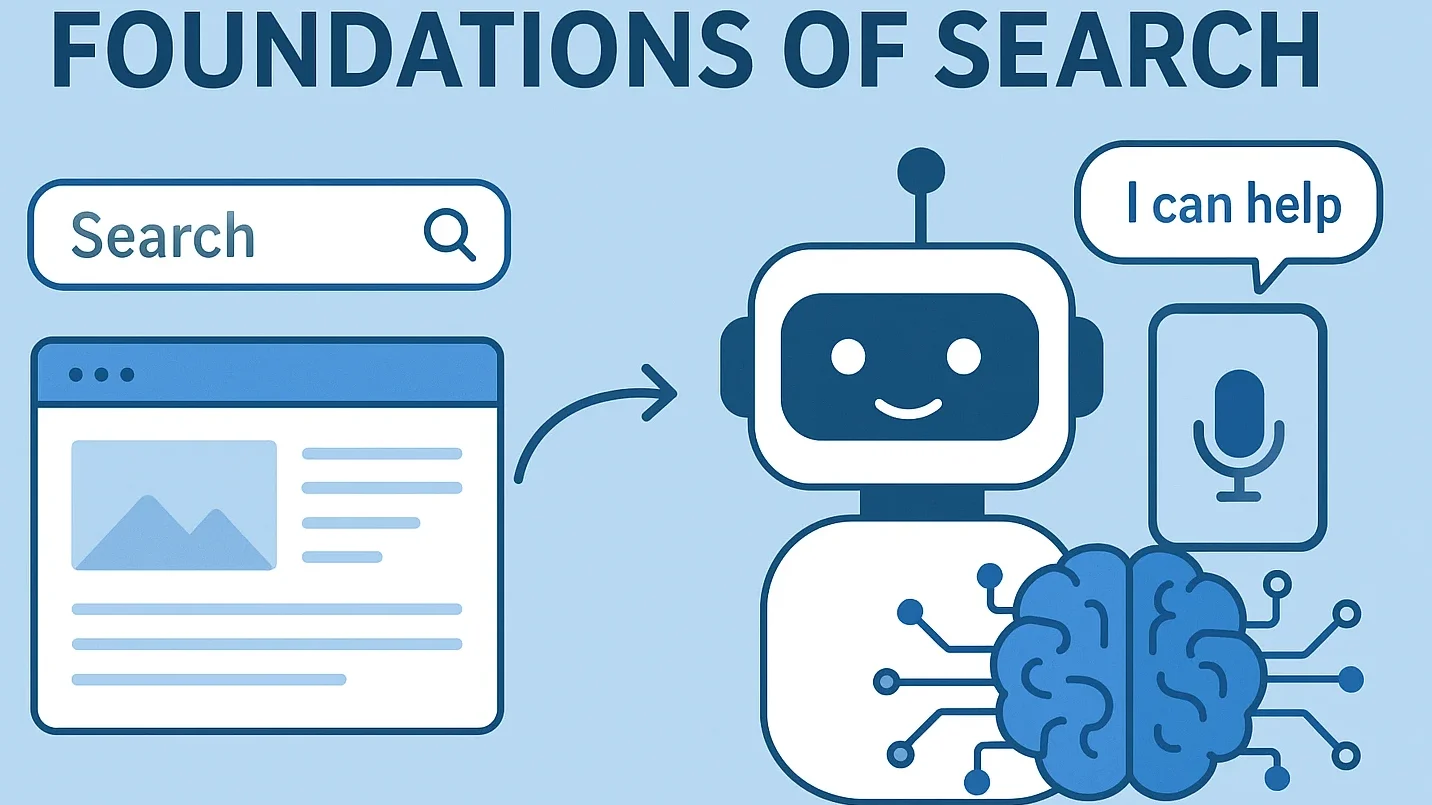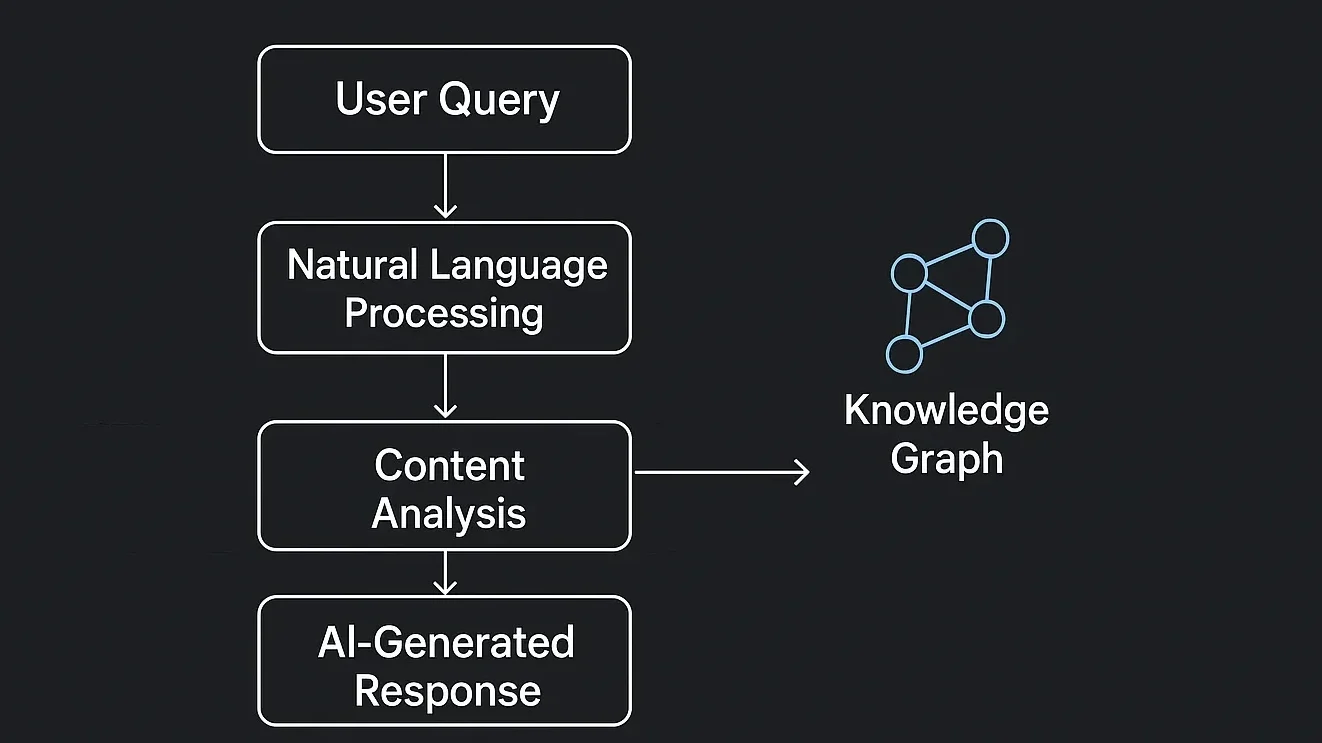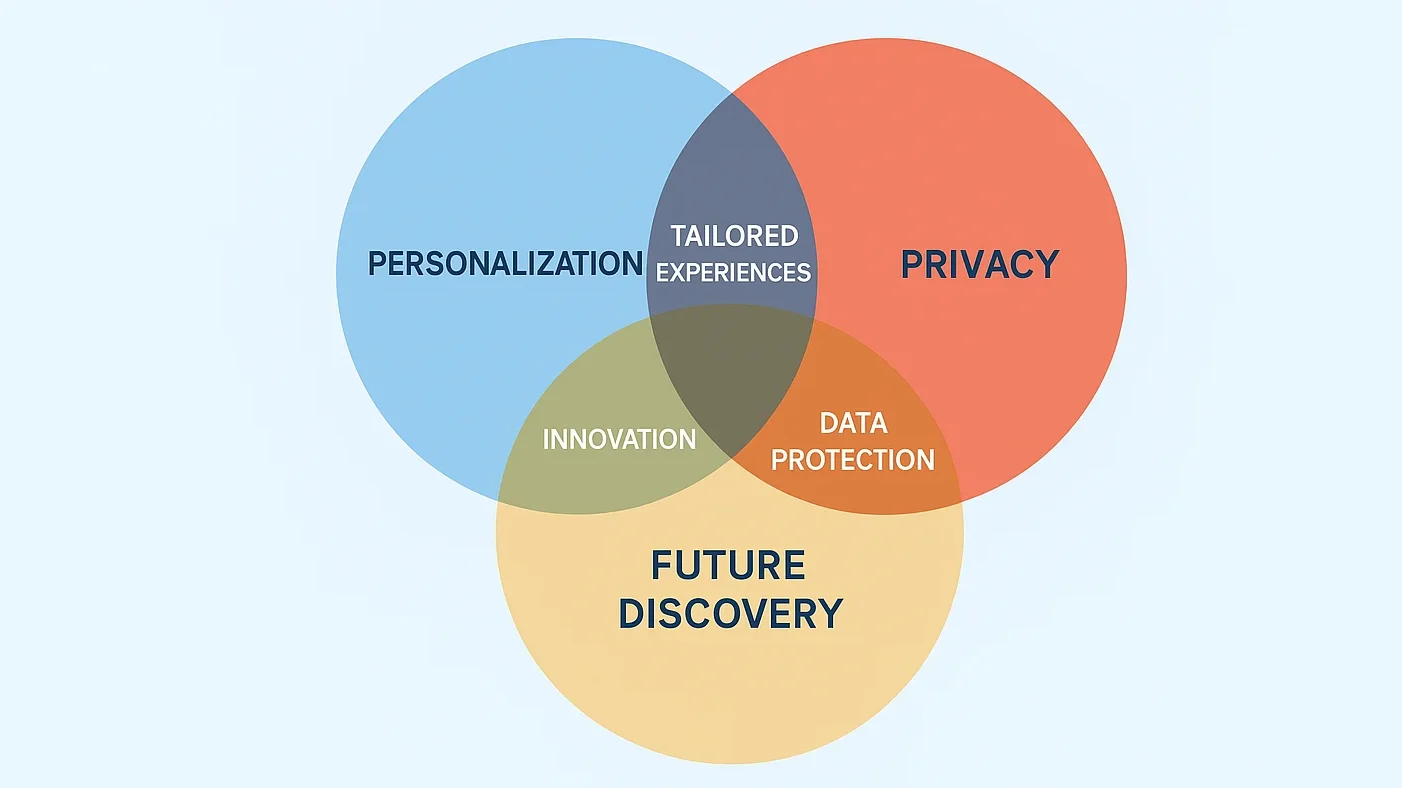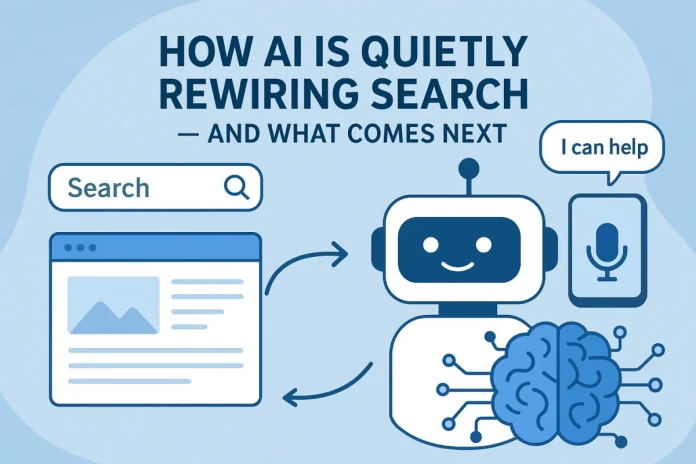For more than two decades, the internet revolved around one idea: to be found, you had to rank on Google. Search Engine Optimization drove the structure of websites, content strategies, and even business models. But in 2025, that system is no longer the only path to visibility. Search hasn’t disappeared, but its form and function have evolved. It now happens within applications, voice interfaces, and AI agents that understand user intent before a query is even completed. It’s ambient, embedded, and increasingly invisible.
Users are still looking for answers, but those answers now come from places like Chat GPT, Perplexity, and voice assistants. These platforms aren’t pointing to web pages. They’re generating summaries, explanations, and action steps based on trained models, real-time content retrieval, and large-scale data interpretation. The result is a more personalized, more direct version of search, where content must compete to be cited, not just clicked.
Key Takeaways
- Search and visibility dynamics have shifted; users now seek answers from AI tools rather than traditional search engines.
- Generative AI like GPT-4 and Claude creates responses based on context and user intent, changing how content is prioritized.
- SEO agencies are adapting by focusing on creating AI-compatible content to enhance discoverability across various platforms.
- AI tools emphasize well-structured, semantically rich content, making machine readability essential for visibility.
- The future of discovery leans towards personalization and privacy, with AI determining content relevance and quality.
Table of Contents
- AI Changes the Foundations of Search
- From Keywords to Knowledge Embeddings
- How AI-Based Search Engines Actually Work
- The Role of Technical Content Engineering
- Search Is No Longer Centralized
- What SEO Agencies Are Doing to Keep Up
- Personalization, Privacy, and the Future of Discovery
- Conclusion: What Matters Most Now
AI Changes the Foundations of Search
Generative AI has played a huge role in this transformation. AI models like GPT-4, Claude, and Gemini 3 can generate complete answers using embeddings, retrieval-augmented generation, and multi-source synthesis. Instead of just indexing words, these systems interpret meaning and generate contextually rich outputs based on what users are likely trying to achieve. When a user types or speaks a prompt, the AI turns that into an embedding and uses vector similarity to pull relevant content. The result is a natural-language response that pulls pieces from the web but may never credit or link back to any particular source.
This means the model, not the user, determines what content is worth citing. And the visibility of your content now depends on its structure, semantic clarity, and usefulness in the context of AI generation, not just your placement in a list of ten links.

From Keywords to Knowledge Embeddings
According to McKinsey & Company, more than 60 percent of internet users are actively engaging with AI-powered tools monthly. These tools not only supplement search but often replace it altogether. In parallel, Gartner predicts that by 2026, 80 percent of enterprises will use generative AI APIs or tools in their workflows, making AI-assisted search part of the mainstream enterprise tech stack.
This shift creates a new technical challenge. Unlike traditional search engines that rank pages by hundreds of factors, AI-based systems evaluate whether your content is usable in a generated response. They prioritize documents that are well-structured, semantically rich, and written in a tone that aligns with user prompts. Content must be machine-readable, not just SEO-optimized.
How AI-Based Search Engines Actually Work

To understand how these systems operate internally, it’s helpful to examine their mechanics. AI-based search engines don’t rely solely on crawling and ranking. They use a combination of embeddings, vector databases, and language model inference to retrieve and assemble relevant answers based on semantic proximity. The goal is not to link to information but to explain it directly. This is how they work:
The Role of Technical Content Engineering
This new landscape turns content strategy into an engineering problem. If a piece of content is not structured in a way that models can interpret, it may be ignored entirely. This involves utilizing JSON-LD, schema.org, OpenGraph metadata, and well-defined heading structures to clearly indicate the relationships between topics. Content also needs to be modular so that AI models can extract the right portion to support a response.
Visibility is now tied to interoperability with AI infrastructure. Websites must speak the same language as the models parsing them. This isn’t a future goal; it’s a present-day requirement.
Search Is No Longer Centralized
Platforms like TikTok, Reddit, Pinterest, and even Amazon are becoming primary sources for discovery. Search no longer begins and ends with a browser. Users ask questions in video apps, shopping platforms, and conversational tools. Each of these platforms has its own AI layer, its own algorithm, and its own method for surfacing content.
Developers and strategists must rethink discoverability in this distributed model. Optimizing for just one ecosystem is no longer enough. Content needs to be adaptive, contextual, and available across multiple formats and platforms.
What SEO Agencies Are Doing to Keep Up
In response to these changes, agencies like SEOJuice are retooling their playbooks. They’re helping clients create AI-compatible content that performs across platforms. Rather than chasing search rankings, they focus on getting content recognized and reused inside generative systems. Their work is less about keywords and more about relationships between entities, between formats, and between user intent and AI understanding.
Their strategies reflect the broader shift: from search engine optimization to language model optimization.
Personalization, Privacy, and the Future of Discovery
Looking ahead, this trend is only accelerating. Voice interfaces are becoming more natural and widespread, especially as AI agents begin to manage tasks like travel booking, product comparison, and research consolidation. Browsers are integrating AI into native search functions. Tools like Arc, Copilot, and Brave’s AI assistant are creating a more personalized, predictive search experience.
Generative engines are also evolving into personal retrieval models. These AI tools understand each user’s history and preferences, generating content tailored to their context. Over time, universal search engine optimization strategies may give way to AI-specific personalization.
Meanwhile, knowledge graphs and verified citations will carry increasing weight. Content will be judged not only by what it says but by how well it aligns with other sources, how often it’s referenced, and how easily it can be parsed for structured meaning. Regulatory frameworks may also shift, affecting how AI tools ingest and train on public web data.

The direction is clear: AI will be both the filter and the gateway to information.
Conclusion: What Matters Most Now
Search is not dying. It’s mutating. And as it spreads into every app, every interface, and every system that generates answers instead of links, the rules of digital visibility change.
Your website doesn’t just need to rank. It needs to explain, inform, and structure its data for reuse by AI. This is not a technical SEO upgrade; it’s a strategic shift in how brands, publishers, and technologists think about discoverability.
The challenge is real, but so is the opportunity. Content that’s structured for models can appear in more places than ever before. It can power chatbot responses, voice assistant outputs, product discovery tools, and more.
To be seen in this new search paradigm, your content must be built for inclusion not just in results pages, but in answers. Because that’s where the user journey begins and ends.











